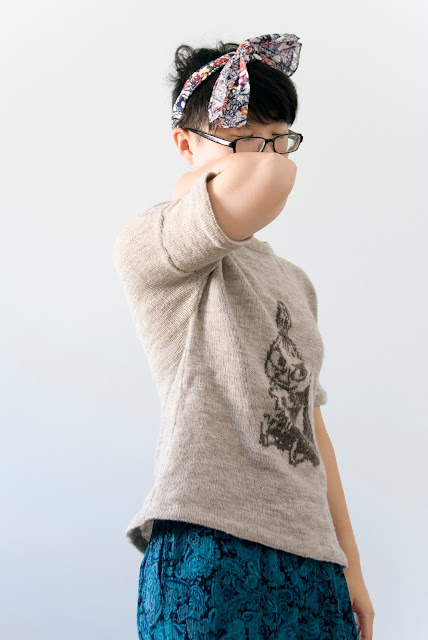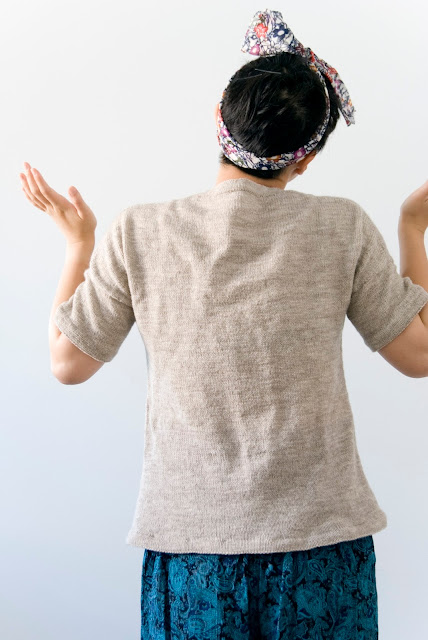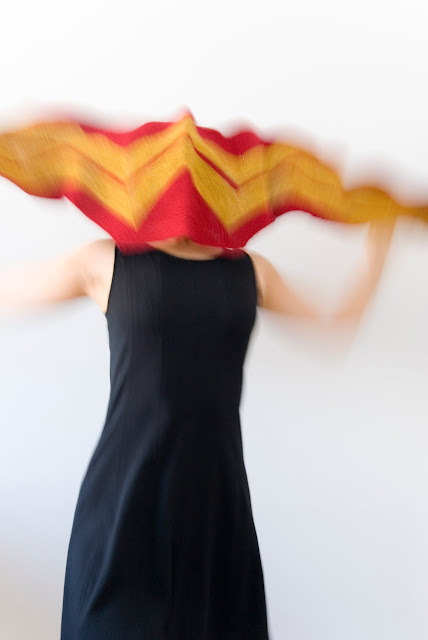 |
| Lilla My sweater/shirt for the brother |
So... this was what it was meant to be, for my brother (above).
 |
| Lilla My on the front |
This is how it came out (above).
Now, my brother's about one full size larger than I am as far as clothing goes. So suffice it to say it doesn't fit him. The good news is that it came out pretty true to the illustration, at least! The slightly relaxed fit, the drop shoulder, the Lilla My... the size just came out completely wrong. About a full size wrong. What went wrong? I can only guess at a few possibilities.
- I had two gauge swatches: the first was not quite tall enough, but used the chart, and the second was the bottom half of the shirt after I had ripped out the colourwork because my row gauge was wrong and I had to reknit it. I should have made two swatches: one with the chart, and one plain stockinette. Then I could probably have made more accurate calculations regarding how to make up for the difference. Measuring again using this finished shirt, here is the stitch gauge: 25 sts (stockinette) and 28 sts (over chart) = 4". That's a pretty big difference.
- I put too much faith in the magic of blocking. It seemed to stretch out somewhat and relax into a good shape after the first block, so I didn't have my brother try it on or compare it against the tee he gave me as reference after that.
- I tried it on in the last few stages and saw that it fit me, and assumed my brother being only one size larger should be ok with that too (and besides, it would stretch back out a bit after blocking, right?)
 |
| Weeeell... what can you do right? |
I'm actually pretty miffed about the whole thing because this would have been the first thing I knit specially for my brother, but well... what can you do? I'm not about to rip the entire thing out (who knows if I'd ever finish it again after frogging the entire sweater?) and the sizing issue's a bit too much for me to just adjust it little by little, so. The shirt will have to be for me and/or my mom, since it fits us pretty well. And just in time, too! It's getting a bit chilly, but not outright cold just yet, so we'll be able to make good use of it, I'm sure.
 |
| Welp! |
At least I've learned a few things from this project (in addition to getting a nice new shirt, though it's not really my style):
- Make proper gauge swatches! Especially if I'm going to be doing colourwork, because now I know that my tension goes horribly awry when I do that.
- Use smaller needles for the inside of the folded hems: I had to reknit the sleeve hems because (as you can see in the photos above) the folded hems are kind of popping out a bit. That's because I knit them using the same size needles. I went down to 2.5mm needles afterwards for the inside bit.
- The sweater curse runs true, even if it's only for your brother! (For further proof, see the unfinished Sherwood sweater, which I'm pretty sure is actually also too narrow for him.)






